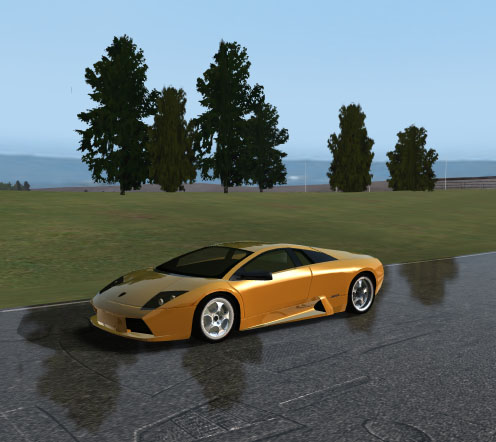Racer is a free cross-platform car simulation project (for non-commercial use), using professional car physics to achieve a realistic feeling and an excellent render engine for graphical realism. Cars, tracks and such can be created relatively easy (compared to other, more closed, driving simulations).
 The 3D, physics and other file formats are documented. Editors and support programs are also available to get a very customizable and expandable simulator. OpenGL is used for rendering.
The 3D, physics and other file formats are documented. Editors and support programs are also available to get a very customizable and expandable simulator. OpenGL is used for rendering.
Racer is a free car simulation project, using real car physics to get a realistic feeling. Cars, tracks, scenes and such can be created with relative simplicity in mind (compared to other driving simulations). The 3D and other file formats are, or should be, documented. Editors and support programs are also available to get a very flexible and expandable simulator. It uses OpenGL for rendering.
It attempts to do well at the physics section, trying to create life-like cars to emphasize car control and doesn’t cut back on realism in the interest of fun. If you’ve played Grand Prix Legends from Papyrus, you’ll know what I’m talking about.
FEATURES
- It’s totally free! (for non-commercial use)
- Available for multiple platforms; Windows 2000/XP (95/98/ME may work but have some trouble with fonts), Linux and Mac OS X.
- 6 DOF chassis movement (the car can move around freely); around 15 DOFs in a total car (wheels/engine/clutch etc).
- Uses motion formulae from actual engineering documents from SAE for example.
- Incredible flexibility; almost everything is customizable through ASCII files.
- Commercial-quality rendering engine (with smoke, skidmarks, sparks, sun, flares, vertex-color lit tracks).
- Support for Matlab (log files can be converted into Matlab format for further analysis & processing).
- Support for Matrox’ Surround Gaming.
- Lots of addon cars and tracks available on the web (over 100 tracks & cars).
- Easy integration of your own cars and tracks that you create in ZModeler, 3D Studio Max(tm), Maya etc.
- At least 15 degrees of freedom for a regular car (6 DOF for the car body, 1 for each wheel’s vertical motion and 1 for each wheel spinning, and 1 for the engine, several more for the driveline). Depending actually on how many wheels you put on the car.
- Real-time internal clock; no physical dependency on framerate. Controller updates are also done independently of the framerate.
- Not limited to 4 wheels; anything from 2 to 8 wheel vehicles are currently supported (but mostly untested, and some problems with hardcoded differentials for example may exist (v0.5.0)).
- Not much constraints on the track data; surface info is taken from polygon data (VRML tracks), and splines are used to smooth out the track surface (polygons are too harsh for driving on just like that).
- Tools to modify the cars & tracks are freely available on this site (though some external utilities like 3D Studio Max are recommended for best results).
- Some used algorithms are explained on this site, so this site can be interesting to learn from if you create your own car simulation software. Also, links and references are available.
More info here.
Donwload here.
